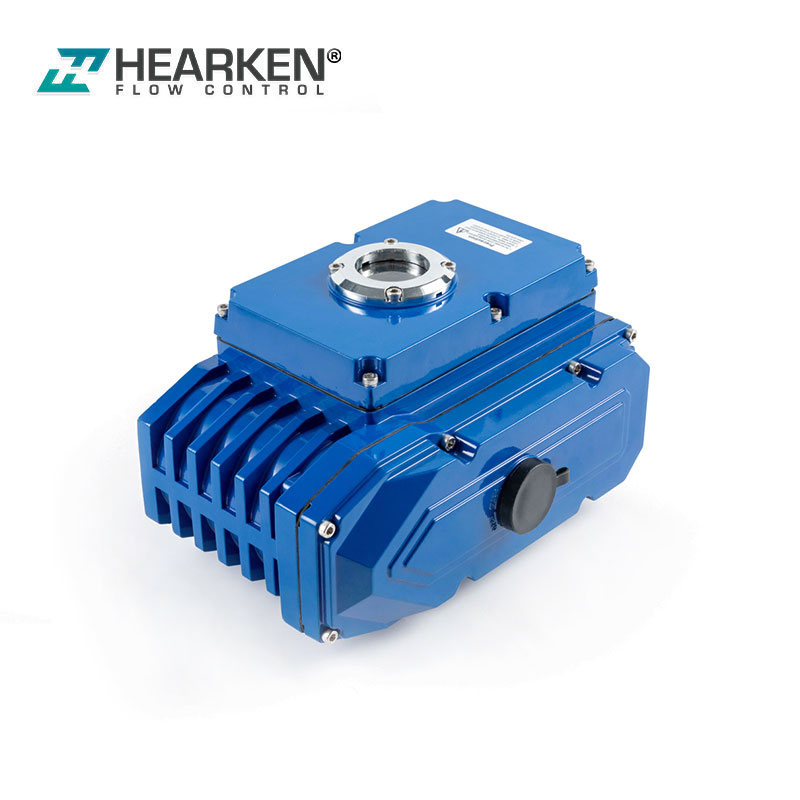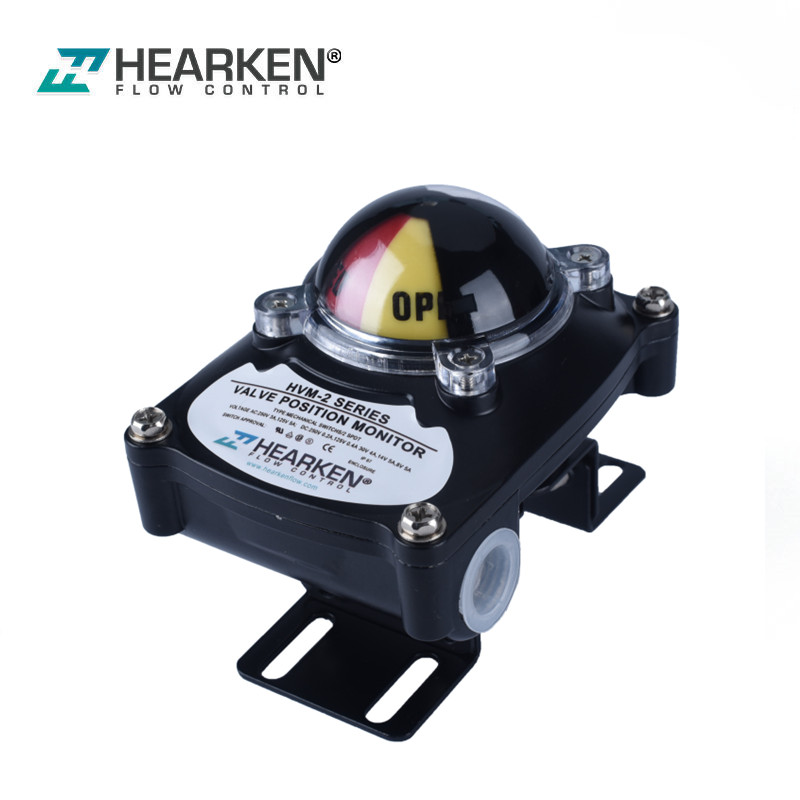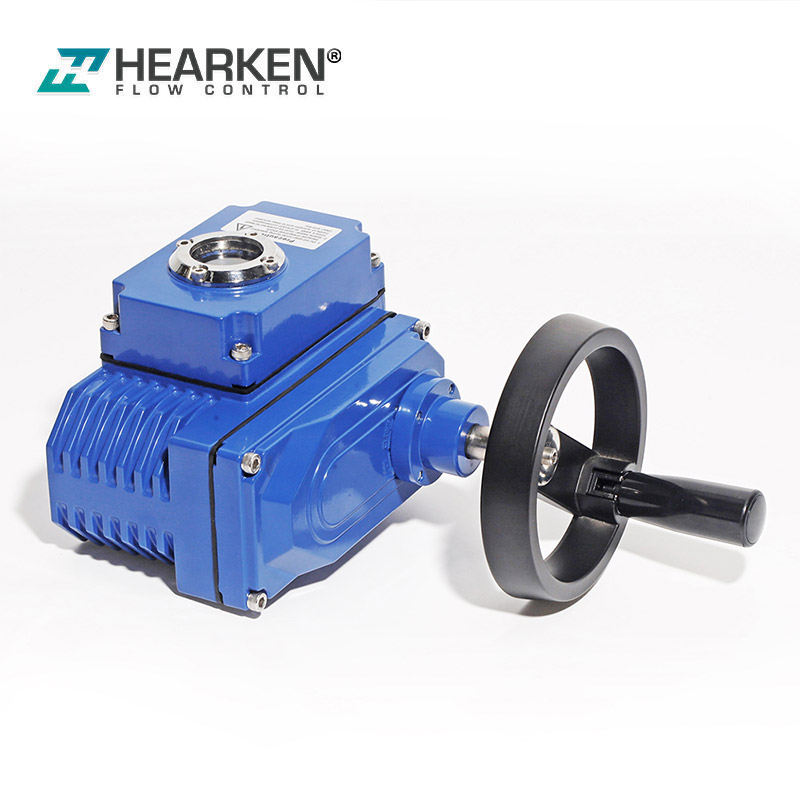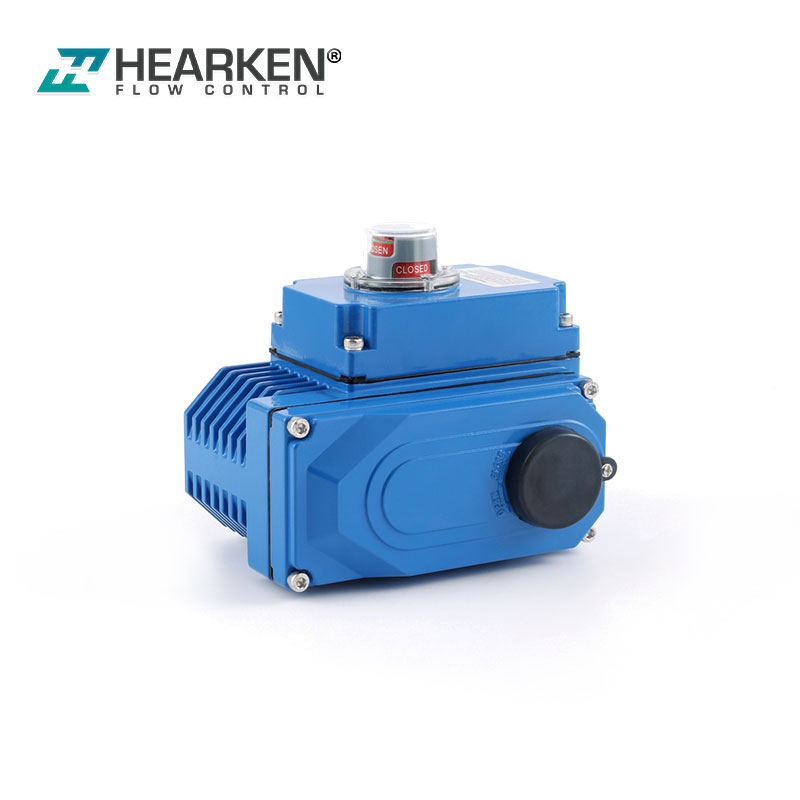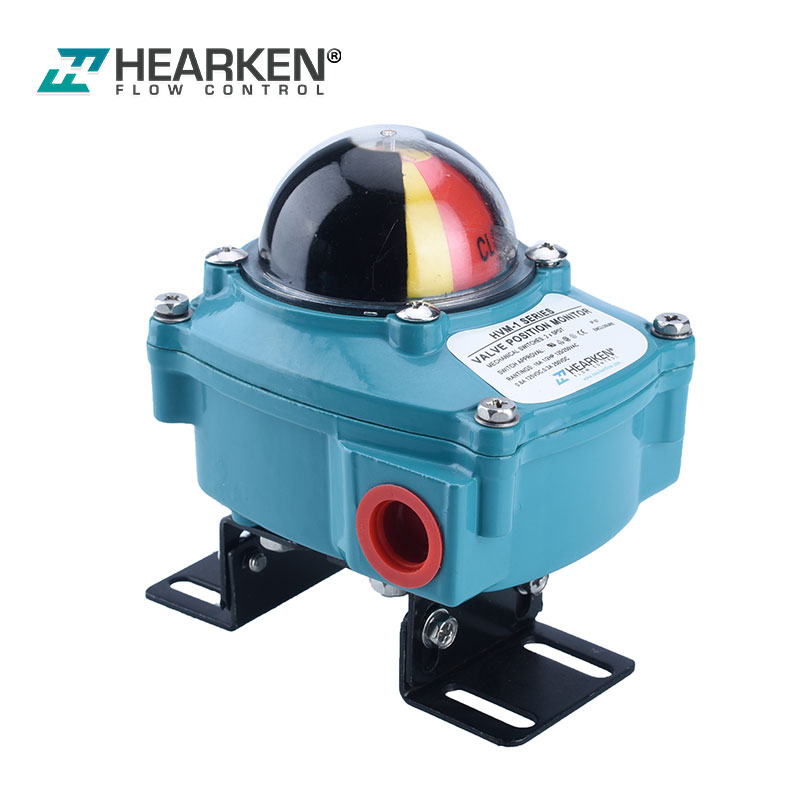Pneumatic Control Valve
Hearken Flow Pneumatic Control Valve is composed of two parts, the actuator and the valve body, namely:
Hearken Pneumatic control valve = actuator + valve body parts + accessories
Among them, the actuator is the pushing device of the control valve, which generates a corresponding thrust according to the signal pressure, so that the push rod produces a corresponding displacement, thereby driving the spool of the control valve to move; the valve body part is the regulating part of the control valve, It is in direct contact with the medium, and through the displacement of the actuator push rod, the throttle area of the pneumatic control valve is changed to achieve the purpose of regulation.
Hearken Pneumatic control valve are mainly divided into three categories: pneumatic control valves, electric control valves, and hydraulic control valves according to their different energy sources. The difference between them lies in the implementing agencies. The former is equipped with pneumatic actuators, the middle one is equipped with electric actuators, and the latter is equipped with hydraulic actuators.
Pneumatic control valve sectional structure diagram :
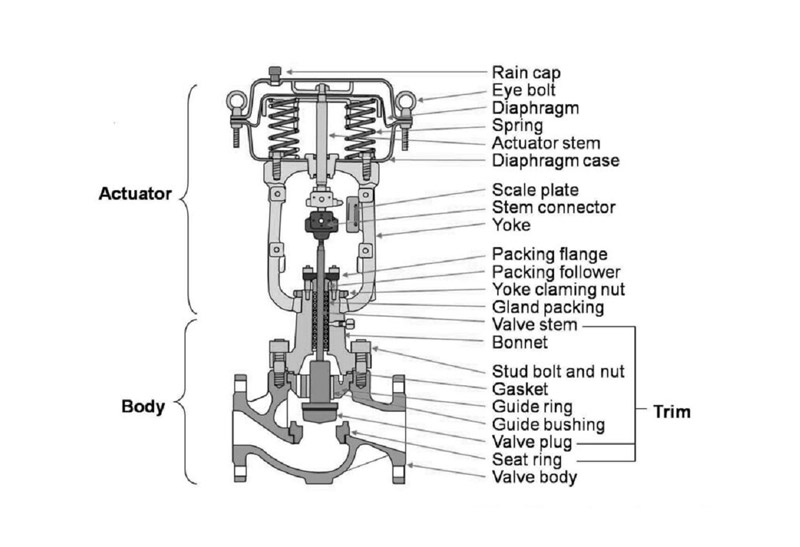
The function of the regulating valve from hearken
1. Adjustment function
1) Flow characteristics
The flow characteristics reflect the relationship between the opening of the control valve and the flow rate to adapt to different system characteristics. For example, a logarithmic characteristic is required for a fast response to a flow control system; a linear flow characteristic is required for a slow response to a temperature control system. The flow characteristic reflects the regulating quality of the regulating valve.
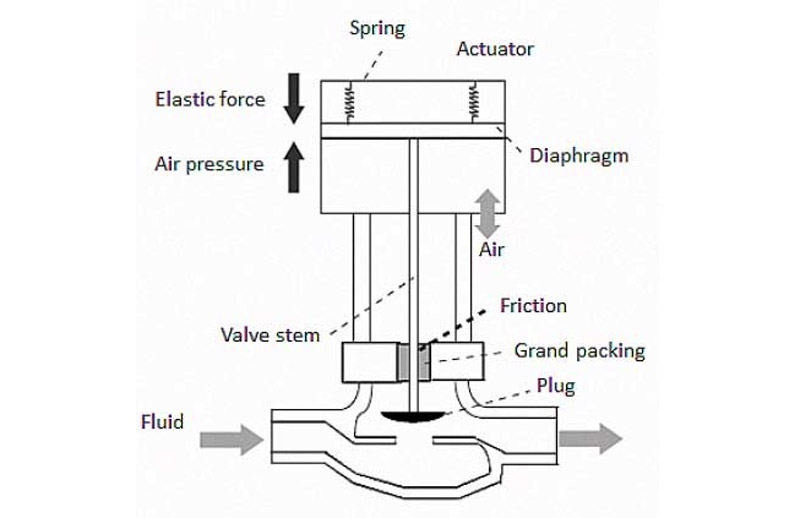
2) Adjustable range R
The adjustable range reflects the controllable flow range of the regulating valve, expressed by the ratio of R=Qmax:Qmin. The larger the R, the wider the range of adjusting the flow rate, and the better the performance index. Usually the valve R=30, good valves, such as V-shaped ball valve, full-function ultra-light regulating valve, R can reach 100-200.
3) Small opening work performance
Some valves are restricted by the structure, and the small opening degree has poor working performance, causing start-up and oscillation, and R becomes very small (that is, Qmin is very large), such as double-seat valves and rubber-lined butterfly valves. A good valve should have a fine adjustment function for small openings, which can meet the adjustment of a small flow rate and require a very balanced work. Such valves are V-shaped ball valves, eccentric rotary valves, and full-function ultra-light regulating valves.
4) Flow co efficient Cv or Kv
The flow coefficient indicates the ability to pass the flow. The larger the Kv value of the same diameter, the better, especially for ball valves and butterfly valves. Their Cv/Kv values are 2 to 3 times that of single-seat valves, double-seat valves, and sleeve valves
5) Adjust the speed
Meet the system's speed requirements for valve action.
2. Cut-off function
The shut-off function is represented by the valve's leakage index. Shut-off usually means that the leakage is less than 0.001%, which reflects the inherent quality of the valve. In the use of the valve, the voice of large leakage of domestic valves has been greatly reflected.
3. The function of overcoming the pressure difference
It is usually expressed by the allowable pressure difference when the valve is closed. The greater the allowable pressure difference, the better the function. If you don't consider it well, the valve core will be opened by the pressure difference, causing the valve to not close in place and the leakage exceeds the standard. Therefore, to ensure that the valve is shut off, the working pressure difference when the valve is closed must be overcome.
4. Anti-blocking function
The adjustment of dirty media, or even the clean media, welding slag and other debris in the pipeline may cause the valve to be blocked or jammed. Therefore, the valve should have a better anti-blocking function to allow it to be adjusted normally. The best anti-blocking properties are single-seat angle valves and rotary valves with the simplest flow path, such as ball valves, butterfly valves, and eccentric valves; valves with complex flow paths, valves guided by upper and lower bushings, and labyrinth-type multi-stage pressure reducing valves are easy Cause jam.
5. Corrosion resistance
Resistant to corrosion and erosion and cavitation of the medium to improve the service life of the valve. Valve corrosion is a material corrosion problem caused by the chemical properties of the medium. Corrosion-resistant materials are usually used to solve the problem; erosion is caused by high-speed flowing medium and medium containing particles. The solution is to choose wear-resistant materials, such as surfacing stellite alloy or tungsten carbide. For cavitation, anti-cavitation measures should be adopted in the structure of the mechanism, and multi-stage pressure reduction should be adopted for high-pressure valves and regulating valves that work with large pressure differences.
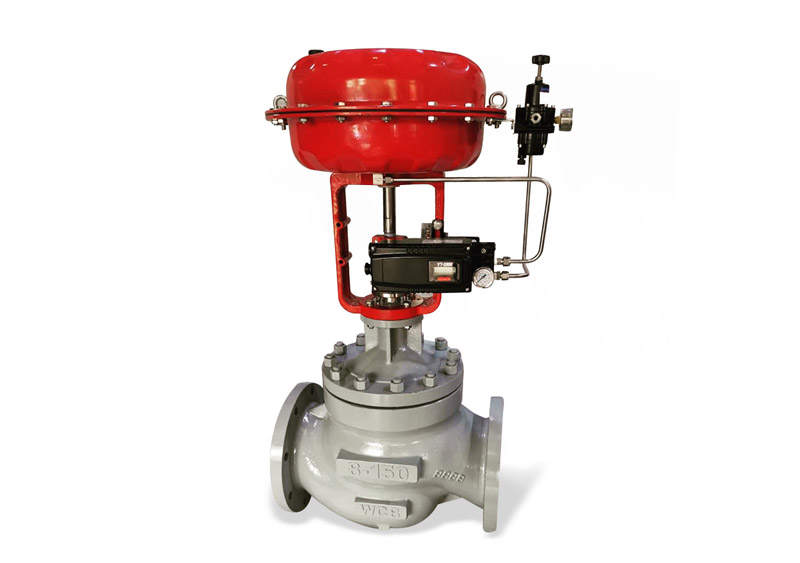
6. Withstand voltage function
It reflects the strength and safety index of the valve, that is, the medium cannot leak through the seal and the defect of the valve body. Usually 1.5 times the nominal pressure is used for testing when leaving the factory. For high-pressure media, it is best to use forging structure; cast iron valves have the lowest compressive strength, usually cast steel valves should be selected.
7. Temperature resistance function
Meet the strength and performance of the valve under different temperature conditions. Large changes in temperature will reduce the strength of the valve body material. Therefore, the valve must meet the requirements of the temperature change range of the medium to make the valve have better strength and safety at operating temperature guarantee.
8. Appearance and weight
It reflects the appearance quality of the valve and requires instrumentation, lightness and miniaturization. Its weight should be as light as possible to facilitate use, such as lifting, installation, and maintenance.
According to the national standard of pneumatic control valve: GB/T4213-92, a total of 14 performance indicators:
1 basic error; 2 return difference; 3 dead zone; 4 point deviation; 5 rated stroke deviation; 6 leakage; 7 sealing of stuffing box and other joints: 8 air tightness of air chamber; 9 compressive strength; 10 Rated flow coefficient; 11 inherent flow characteristics; 12 anti-vibration; 13 action life; 14 appearance.
Requirements for the air source and ambient temperature of the regulating valve
The air source should be clean, dry air, without obvious corrosive gases, solvents or other liquids. For the regulating valve with positioner, the amount of solid particles in the gas source should be less than 0.1g/m, the particle diameter should be greater than 3μm, and the oil content should be less than 1ppm.
The unclean air source of the positioner is the main reason for the abnormal operation of the positioner, which accounts for more than 2/3 of the failure rate. Special attention should be paid to this point.
The ambient temperature of the regulating valve is -25~+55℃ or -40~+70℃.
The Hearken flow control valve should meet the above requirements when working.

